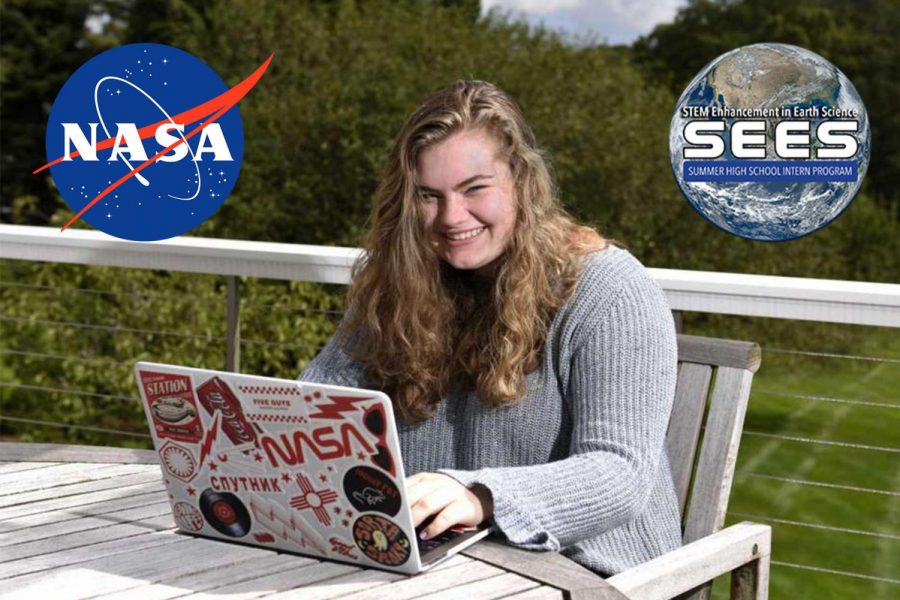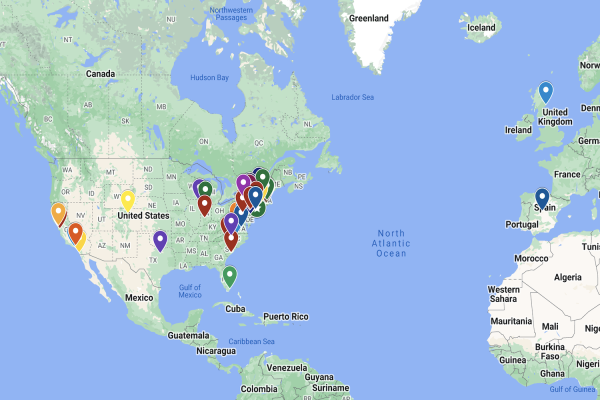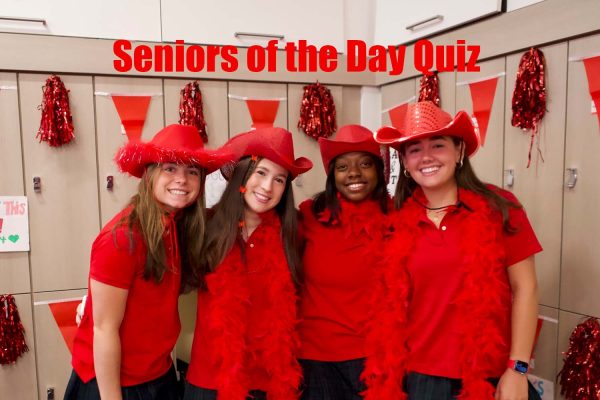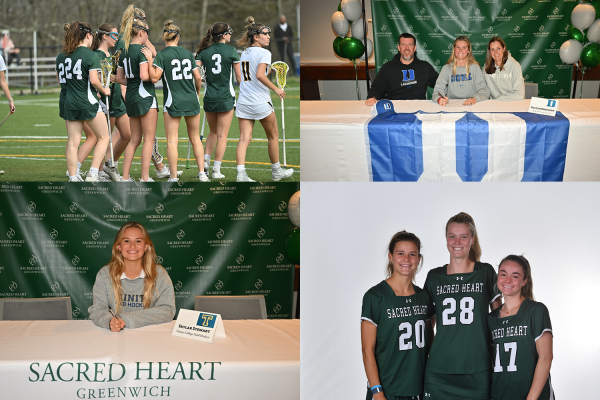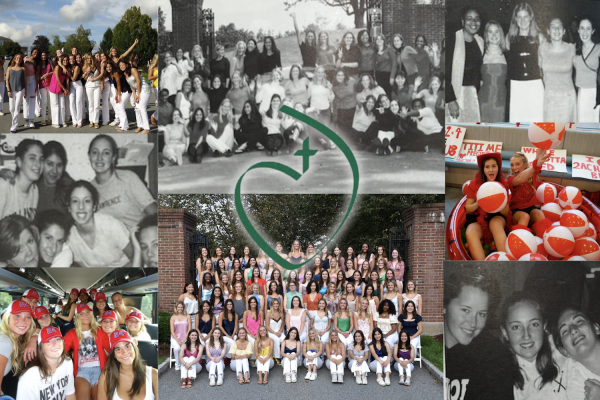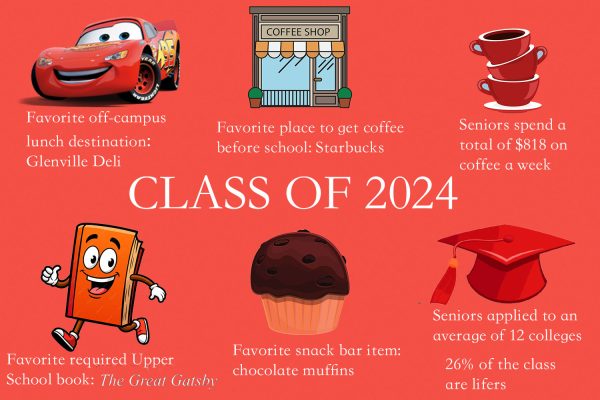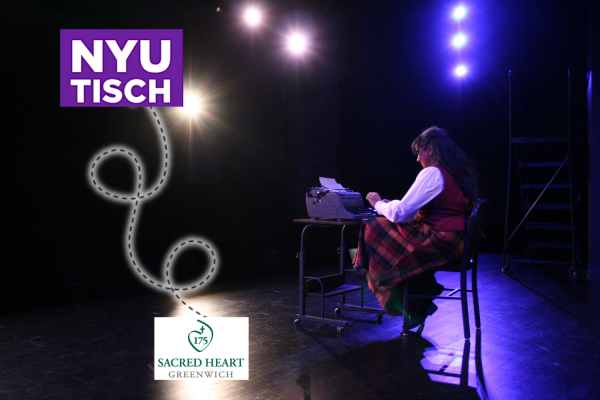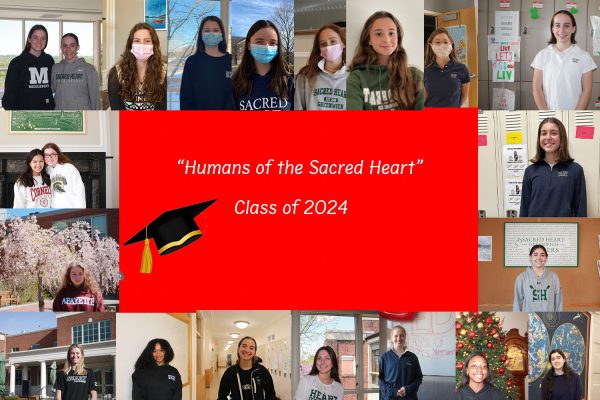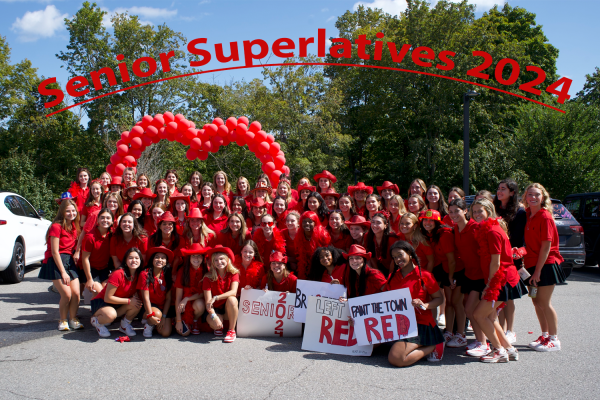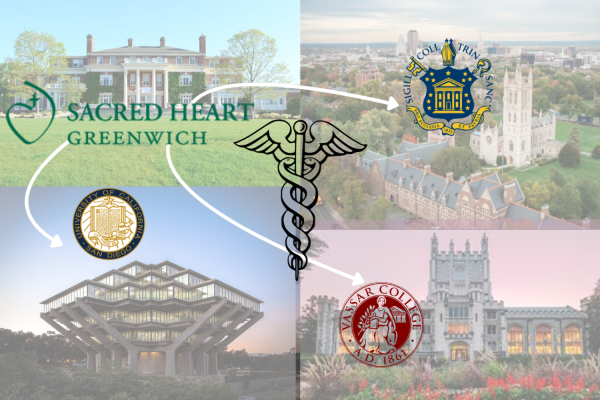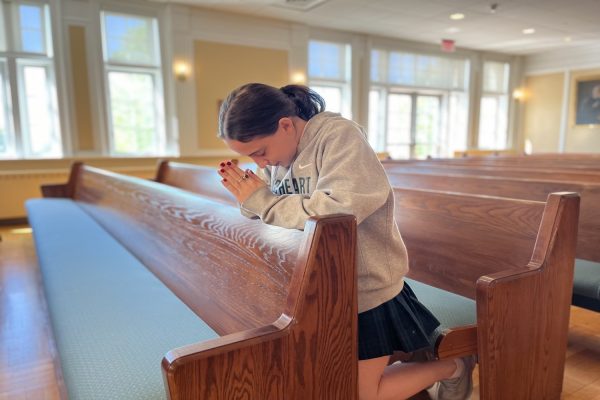Student pursues astronomy through virtual NASA internship
Piper Gilbert ’21 was one of only two students in Connecticut selected to participate in the NASA SEES Summer High School Intern Program this summer.
Senior Piper Gilbert participated in the Science, Technology, Engineering, and Mathematics (STEM) Enhancement in Earth Science (SEES) Summer High School Intern Program, ran by the National Aeronautics and Space Administration (NASA) and The University of Texas at Austin, June 1 to July 31. Although due to the coronavirus pandemic Piper was not able to physically go to Texas for the program, she was still able to participate virtually as a part of the Mars Exploration Team and learn more about the career that she hopes to pursue in the future.
The SEES Program is a nationally competitive STEM program for high school students that provides selected students with exposure to Earth and space research, according to tscg.utexas.edu. Interns for the program learn how to interpret NASA satellite data while working alongside scientists and engineers in their chosen area of work.
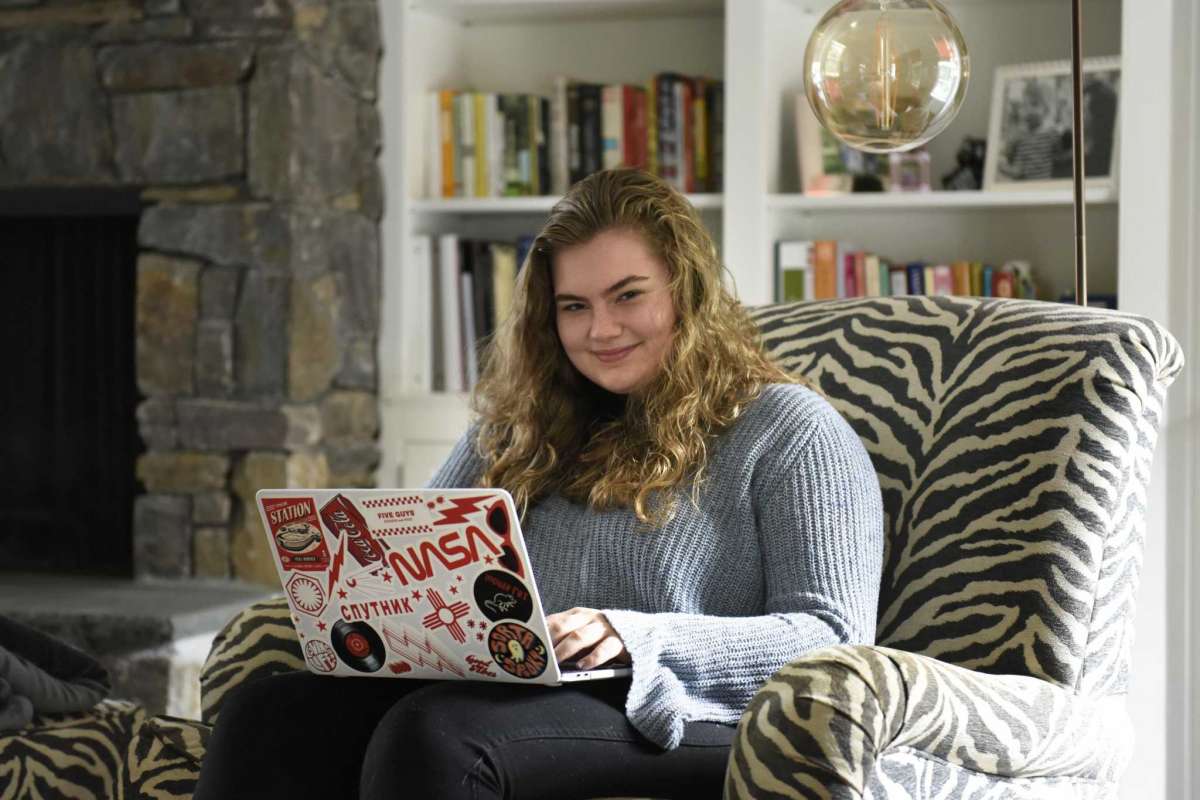
Piper found out about the program after Ms. Mary Musolino, Upper School Science Teacher, mentioned it to her. She decided to apply due to her lifelong interest in the field of astronomy, and she hopes to pursue a career in this field after graduating from Sacred Heart Greenwich. The research that she performed with the program is also connected to her science research project at Sacred Heart, entitled “The Effects of Simulated MSG-1 Martian Soil on the Growth Rates of Plants.”
“I’ve been observing how plants grow in different ratios of Earth soil and this type of simulated Martian soil in order to see if we can grow plants on Mars,” Piper said. “It was amazing to then be assigned to the Mars Exploration Team, as I got to incorporate the work I’ve been doing in science research.”
In addition to the program making the internship virtual, it was also extended to last two months, instead of the original three weeks, to ensure that the students would grasp all of the same material that they would have had it been in-person. The interns presented their final work over Zoom and posted their presentations to YouTube. The individual teams also held meetings over Zoom and communicated via online platforms.
Piper was a part of the Mars Exploration Team that worked alongside two other teams, the Mosquito Mappers and the COVID-19 Trackers. The assignment for her team was to develop a fully functional Martian Base that would support 14 astronauts for at least 26 months. The interns began by learning from modules that consisted of videos, lectures, and quizzes on different materials, such as climate science and Martian exploration. After the first month of the program, the groups began meeting virtually to plan their work. The teams gave their final presentations July 30 to all of the other interns, program directors, and scientists who were a part of the program.
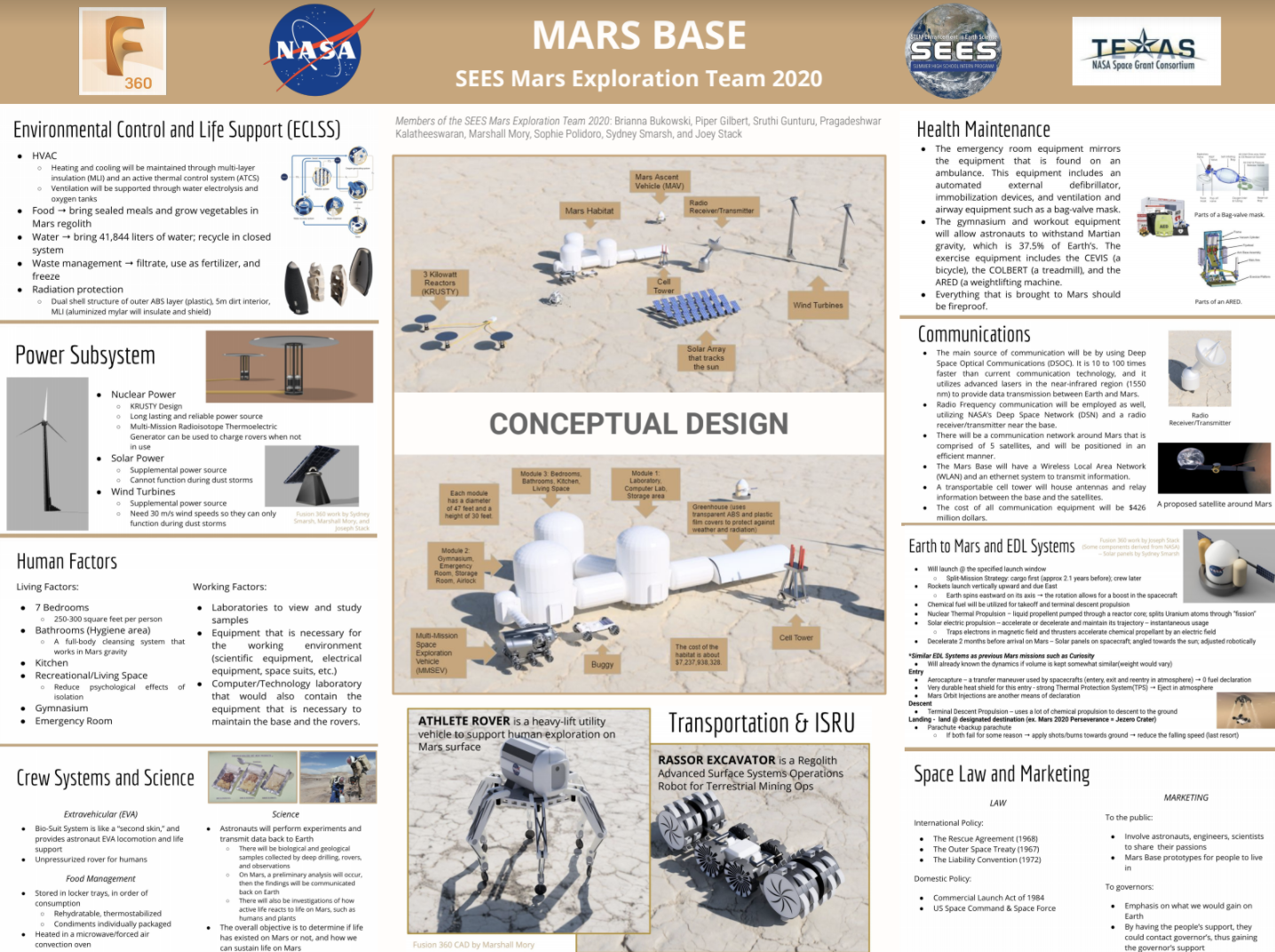
“I learned so much, especially about Environmental Control and Life Support Systems (ECLSS) in space stations and bases, as it was my focus throughout the internship, and I absorbed an incredible amount about my teammates’ subsystems and areas of study,” Piper said. “I also learned loads about climate science, orbital mechanics, Mars exploration, and the like, as they were some of the topics my modules covered, and I acquired some basic Python programming skills from our training seminar.”
Piper believes that it is important for high school students to be able to participate in programs like this to be able to gain exposure in a field that interests them and to help them decide what they would like to pursue as a career.
“I think it’s incredibly important for high schoolers to be able to participate in programs like this because it’s a real-world experience in a field that could potentially be a career,” Piper said. “I’ve always wanted to study astronomy and space in some fashion, so it was such an amazing opportunity to see how that might pan out into a job. I wouldn’t normally get exposure to the careers and areas of study that I did over summer. As high schoolers, we don’t always get to see what we can do after we graduate, but there are so many fantastic careers out there—this was a great way to acquaint myself with one.”
After attending Sacred Heart for 11 years, Piper also realizes the importance of representation for young women in the STEM field, and to also be able to access and participate in these programs.
“As young women, we’re underrepresented in STEM,” Piper said. “Because we don’t often see people like us in scientific careers, we, in turn, feel like we can’t attain those jobs, even subconsciously. It’s then incredibly important for those of us who do have opportunities like this to take advantage of them, as they are the stepping stone for jobs in STEM and will pave a path for younger girls out there who are inclined to study science as well.”
Featured Image by Natalie Dosmond ’21
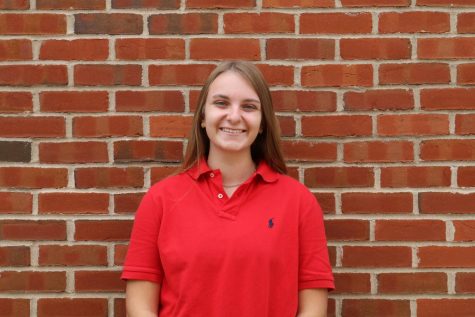
Natalie is thrilled to be the Editor-in-Chief for the King Street Chronicle this year. She is looking forward to engaging with the staff writers and pioneering...

